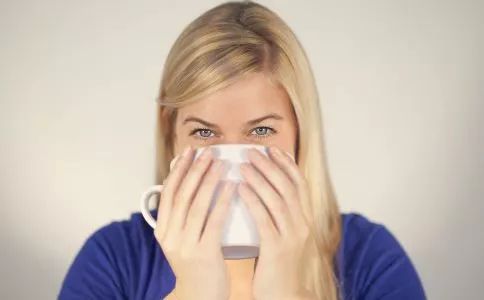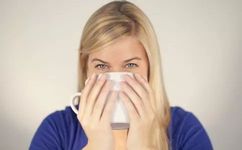Colds can be classified as either Wind-Cold or Wind-Heat. Only by distinguishing between them can we accurately identify the cause and treat accordingly. So how can we determine whether it is a Wind-Cold or Wind-Heat cold? Let’s take a look!
What are the differences between Wind-Heat colds and Wind-Cold colds? Many people are confused about these issues. If one cannot distinguish the symptoms of a cold and takes medication indiscriminately, it can easily worsen the condition. Below, I will introduce relevant knowledge about Wind-Heat colds and Wind-Cold colds.

What is a Wind-Heat Cold?
A Wind-Heat cold is caused by the invasion of Wind-Heat evil and the disharmony of Lung Qi. Symptoms include high fever, slight aversion to wind, headache, sweating, sore and swollen throat, coughing, sticky or yellow phlegm, nasal congestion with yellow discharge, thirst with a preference for drinking, a red tip and edges of the tongue, and a thin white coating with slight yellow. Wind-Heat colds are more common in summer and autumn, caused by external Wind-Heat. Traditional Chinese Medicine (TCM) considers Wind-Heat colds to be exterior syndromes caused by the invasion of Wind-Heat evil.
Symptoms:
1. Main Symptoms
(1) Fever, slight aversion to wind and cold, sweating or little sweating, headache, body aches;
(2) Nasal congestion, yellow and turbid nasal discharge, coughing, red and dry throat.
2. Secondary Symptoms
Slight sweating, dry mouth and thirst, yellow and thick phlegm.
3. Tongue and Pulse Signs
Red tip of the tongue, thin yellow coating; pulse is floating and rapid.
If the main symptom (1) and secondary symptoms are present, or main symptom (2) and secondary symptoms along with typical tongue and pulse signs are observed, a diagnosis of Wind-Heat cold can be made.
What is a Wind-Cold Cold?
A Wind-Cold cold is caused by exposure to cold wind, more commonly occurring in autumn and winter. Symptoms include body aches, nasal congestion with clear discharge, and coughing with phlegm. Treatment can involve both Western medicine and Chinese medicine, as well as dietary therapy. Preventive measures include keeping warm, enhancing physical exercise, and boosting immunity. Wind-Cold colds are caused by the external invasion of Wind-Cold and the failure of Lung Qi to disperse.
Symptoms: severe aversion to cold, mild fever, no sweating, headache, body aches, nasal congestion with clear discharge, coughing with thin white phlegm, no thirst or preference for hot drinks, thin white coating on the tongue.
1. Pain in the Back of the Head
This refers to pain in the back of the head, accompanied by stiffness in neck movement.

2. Aversion to Cold and Wind
Usually, one feels comfortable only when wearing many clothes or under a thick blanket.
3. Clear Nasal Discharge
Clear discharge, white or slightly yellow. If nasal congestion is present without discharge, drinking hot water may induce clear discharge, which also indicates a Wind-Cold cold; the tongue may have no coating or a thin white coating, with heavy nasal congestion sounds. Sneezing, clear discharge, aversion to cold, no fever or mild fever, no sweating, body aches, coughing with thin white phlegm, thin white tongue coating, and a floating tight pulse.
Differences Between Wind-Cold and Wind-Heat Colds
1. Judging by the Cause
For example, a cold caused by exposure to cold wind in winter, leading to symptoms like nasal discharge and coughing, is a Wind-Cold cold. A cold occurring in summer when the body is already hot and then exposed to cold air conditioning for a long time is a Wind-Heat cold.
2. Judging by Symptoms
Wind-Cold cold symptoms include aversion to cold, mild fever, nasal congestion with clear discharge, coughing, expectoration of white phlegm, no thirst or preference for hot drinks, and thin white coating. Wind-Heat cold symptoms include high fever, slight aversion to wind, headache, sweating, coughing, expectoration of yellow phlegm, nasal congestion with yellow discharge, sore throat, thirst with a preference for drinking, and thin white coating with slight yellow.
3. Treatment Methods for Wind-Cold Colds
The key to treating Wind-Cold colds is to expel the cold from the body. Therefore, any treatment method focuses on dispelling cold. A simple home remedy is to drink ginger and brown sugar water. Covering oneself with a blanket to induce sweating can also help, or one can visit a doctor for a prescription of Chinese medicine. The method for making ginger and brown sugar water: Cut two pieces of old ginger into shreds, add two bowls of water and boil, after 2 minutes add an appropriate amount of brown sugar and simmer for 3 minutes, then serve and drink.

4. Treatment Methods for Wind-Heat Colds
Wind-Heat colds are often caused by constipation, and treatment usually involves relieving constipation. When combined with clearing heat and resolving exterior medications, results can be seen quickly. One can drink herbal teas such as cool tea, Ban Lan Gen (Isatis root), or Jin Yin Hua (Honeysuckle) tea. Common Chinese patent medicines include San Huang Pian (Three Yellow Pills), Yin Qiao Jie Du Pian (Yin Qiao Detoxification Tablets), and 999 Compound Cold Granules. Eating cooling foods such as pears, watermelon, and mung beans is also recommended.
Additionally, it is important to note that a sore throat is not the key differentiator between Wind-Heat and Wind-Cold colds; Wind-Cold colds can also present with a sore throat. Viral colds do not equate to Wind-Heat colds; the term “virus” is a Western medical concept, while TCM focuses more on the human body. Therefore, treating viral colds as if they were Wind-Heat colds is incorrect.
How to Prevent Wind-Heat Colds?
1. Avoid activities in hot weather; it is advisable to engage in outdoor activities in the morning or after 5 PM.
2. Ensure proper ventilation in rooms, maintaining a suitable indoor temperature. Air conditioning can be used in high temperatures, but the temperature should not be set below 26°C, and air conditioning should not be run continuously for 24 hours. After outdoor activities or bathing, avoid direct exposure to cold air conditioning, and do not take cold showers; dry off immediately with a towel after bathing.
3. Ensure adequate sleep, aiming for at least 8 hours of sleep per day. A half-hour nap in the afternoon can greatly benefit children.
4. Avoid excessive consumption of cold drinks and ice water due to dryness and heat.
5. Include more hydrating foods in the diet, such as watermelon, mung bean soup, rice, and winter melon. The outer skin of watermelon, known in TCM as “Xi Gua Cui Yi,” is an excellent cooling food that can be boiled in water to make tea.
How to Prevent Wind-Cold Colds?
1. Enhance personal immunity: Immunity is the ability to resist viral invasion. By boosting a child’s immunity, they are less likely to get sick. Encourage physical exercise and outdoor activities to experience seasonal and temperature changes.
2. Maintain a balanced diet: Ensure a comprehensive and nutritious diet to provide sufficient nutrition for growth and a strong body.
3. Reduce exposure to infections: Avoid taking children to crowded places, as their immune systems are still developing and are more susceptible to infections.
4. Get vaccinated against influenza: Vaccination is an effective method to prevent Wind-Cold colds.
All content published and replied by the New Rural Cooperative Medical Public Information Platform is for public sharing and discussion purposes only. The content is for reference only and does not necessarily represent the views of the New Rural Cooperative Medical. Readers are advised to discern for themselves. For issues related to content, image copyright, and others, please contact us via email: [email protected], and we will make timely corrections.
Reading is a habit, sharing is a virtue.


If you find this helpful, please share it. The more people see it, the healthier they will be. Life is only a few decades long; try to leave fewer regrets. Share it, and be grateful. Wishing all friends who share good health forever. For those who haven’t followed yet, please click to follow, don’t forget, thank you all!!!

